#javan leopard cat
Explore tagged Tumblr posts
Text

With short legs, a broad head, and short tail, Javan leopard cats have a powerful build, weighing up to 26 pounds. In order to catch its favorite meal, the Javan leopard cat will not only swim and dive after its prey, but will also try to scoop fish out of the water with its paws. While the bulk of this cat’s diet is fish, it will also take other aquatic prey like crustaceans and frogs, as well as terrestrial animals such as rodents, small wild pigs, and poultry.
Javan Leopard Cat | Joel Sartore
#photo#felidae#felinae#prionailurus#prionailurus javanensis#prionailurus javanensis javanensis#sunda leopard cat#javan leopard cat#joel sartore
15 notes
·
View notes
Text

Javan Leopard "Pelangi"
Pairi Daiza - Belgium
📸 by @mandennophotography
#@mandennophotography#Wildlife#Javan Leopard#Pelangi#Pairi Daiza#Belgium#Animals#Big Cats#Big Cat#Nature#Photography
24 notes
·
View notes
Text

New species unveiled: The Javan Leopard. To receive the infographic, subscribe to the club. Link here: Unveiling Club
#javan leopard#leopard#cat#feline#cute cats#drawing animal#illustration#drawing#scientific illustration#illo#wild animals#wildlife#artist on tumblr#mammals#animals#conservation#inforgraphics
31 notes
·
View notes
Video
Javan Leopard - Pairi Daiza by Mandenno Photography
#Javanese#javaans#Javanleopard#Javan#Leopard#luipaard#Animal#Animals#Animalplanet#animalphotography#Nature#NatGeo#Natgeographic#Natgeowild#wildlife#bbcearth#BigCat#Cat#feline#PairiDaiza#Belgie#Belgium#MandennoPhotography#flickr
24 notes
·
View notes
Note
oooh snow leopard sounwave tracks really well, they're so well-camouflaged it's crazy!
but since i love wildcats i'm going to chuck some at you lmao
andean cat (Leopardus jacobita) - LITTLE guy.

whose face feels very soundwavey to me for some reason
and for a more familiar face- clouded leopard (shown here is Neofelis nebulosa, the mainland sp, but there's also the Sunda sp N. diardi)

i love,,, cats
Since your Falconer Soundwave sees his co workers as animals, wouldn’t it be funny if Ravage is actually also a regular person but he views her as a cat like everyone else? Lol just a silly thought 💗


I thought this was pretty cute so I whipped up a quick human Ravage design just for this 😌 is it canon to the Falconer Soundwave au? Ehhhh, I mean probably not? Idk yet. Or maybe it’s that Soundwave sees Ravage as a person though she’s really a cat, and then other people as animals 🙄 this boy is weird as always… also I wasn’t gonna draw all the spots on panther Ravage ain’t no way. I’d say Soundwave is like the snow leopard to Ravage’s panther leopard 🐆 (or ravage’s jaguar, I haven’t decided between the two yet)
#KITTIES KITTIES KITTIES AAAAH#i love ur takes on cat! ravage. i am of course stage whispering jaguar as loud as possible but you are fully aware of my bias on that front#Jaguars wildly enough don't have ssp just north-south variation that kinda flows smoothly into itself#leopards have a lot of fun ssp though! indochinese (delacouri) is critically endangered unfortunately but has this INSANELY interesting#Population dynamic where a specific region is like... almost entirely melanistic#i'm a big fan of javan and african ssp also#nominate ssp (caucasian/caucasus mtns) is bigger but doesn't have a melanistic morph i think
3K notes
·
View notes
Text
"A 2019 sighting by five witnesses indicates that the long-extinct Javan tiger may still be alive, a new study suggests.
A single strand of hair recovered from that encounter is a close genetic match to hair from a Javan tiger pelt from 1930 kept at a museum, the study shows.
“Through this research, we have determined that the Javan tiger still exists in the wild,” says Wirdateti, a government researcher and lead author of the study.
The Javan tiger was believed to have gone extinct in the 1980s but only officially declared as such in 2008...
Ripi Yanuar Fajar and his four friends say they’ll never forget that evening after Indonesia’s Independence Day celebration in 2019 when they encountered a big cat roaming a community plantation in Sukabumi, West Java province.
Immediately after the brief encounter, Ripi, who happens to be a local conservationist, reached out to Kalih Raksasewu, a researcher at the country’s National Research and Innovation Agency (BRIN), saying he and his friends had seen either a Javan leopard (Panthera pardus melas), a critically endangered animal, or a Javan tiger (Panthera tigris sondaica), a subspecies believed to have gone extinct in the 1980s but only officially declared so in 2008.
About 10 days later, Kalih visited the site of the encounter with Ripi and his friends. There, Kalih found a strand of hair snagged on a plantation fence that the unknown creature was believed to have jumped over. She also recorded footprints and claw marks that she thought resembled those of a tiger.
Kalih then sent the hair sample and other records to the West Java provincial conservation agency, or BKSDA, for further investigation. She also sent a formal letter to the provincial government to follow up on the investigation request. The matter eventually landed at BRIN, where a team of researchers ran genetic analyses to compare the single strand of hair with known samples of other tiger subspecies, such as the Sumatran tiger (Panthera tigris sumatrae) and a nearly century-old Javan tiger pelt kept at a museum in the West Java city of Bogor.
“After going through various process of laboratory tests, the results showed that the hair sample had 97.8% similarities to the Javan tiger,” Wirdateti, a researcher with BRIN’s Biosystemic and Evolutionary Research Center, said at an online discussion hosted by Mongabay Indonesia on March 28.
The discussion centered on a study published March 21 in the journal Oryx in which Wirdateti and colleagues presented their findings that suggested that the long-extinct Javan tiger may somehow — miraculously — still be prowling parts of one of the most densely populated islands on Earth.
Their testing compared the Sukabumi hair sample with hair from the museum specimen collected in 1930, as well as with other tigers, Javan leopards and several sequences from GenBank, a publicly accessible database of genetic sequences overseen by the U.S. National Institutes of Health.
The study noted that the supposed tiger hair had a sequence similarity of 97.06% with Sumatran tigers and 96.87% with Bengal tigers. Wirdateti also conducted additional interviews with Ripi and his friends about the encounter they’d had.
“I wanted to emphasize that this wasn’t just about finding a strand of hair, but an encounter with the Javan tiger in which five people saw it,” Kalih said.
“There’s still a possibility that the Javan tiger is in the Sukabumi forest,” she added. “If it’s coming down to the village or community plantation, it could be because its habitat has been disturbed. In 2019, when the hair was found, the Sukabumi region had been affected by drought for almost a year.” ...
Didik Raharyono, a Javan tiger expert who wasn’t involved in the study but has conducted voluntary expeditions with local wildlife awareness groups since 1997, said the number of previous reported sightings coupled with the new scientific findings must be taken seriously. He called on the environment ministry to draft and issue a policy on measures to find and conserve the Javan tiger.
“What’s most important is the next steps that we take in the future,” Didik said."
-via Mongabay, April 4, 2024
#tigers#tiger#endangered species#extinction#conservation#environment#extinct animals#de extinction#indonesia#java#big cats#wild animals#good news#hope
696 notes
·
View notes
Video
Javan Leopard - Pairi Daiza - Belgium by Mandenno Photography
#Javanese#Javan#Leopard#Javanleopard#javaans#luipaard#BigCat#Cat#feline#Animal#Animals#Animalplanet#Nature#NatGeo#Natgeographic#Natgeowild#wildlife#PairiDaiza#Belgie#Belgium#MandennoPhotography#flickr
6 notes
·
View notes
Text
Disney Palace Pets: Pet Breeds
(This is purely for fun. I had nothing better to do. Don't judge me. These are also purely my headcanons.)
Snow White
Berry: Dwarf Hotot Rabbit Sweetie: Deutches Classic Pony (German Classic Pony) Muffin: Poodle Honeycake: German Rex Thistleblossom: European Hedgehog Madame Hamilot: White Winter Dwarf Hamster
Cinderella
Pumpkin: Poodle Bibbidy: French Saddle Pony Slipper: Persian Brie: Fancy Mouse Midnight: European Wildcat Le Grande: Corgi
Aurora
Dreamy: Birman Bloom: Poney Landais Nuzzles: Red Fox Fern: Long-eared Owl Macaron: English Cocker Spaniel Ash: European Dragon Chipper: Siberian Chipmunk
Ariel
Treasure: Norwegian Forest Cat Seashell: Danish Sport Pony Matey: Faroese Sheepdog Sandy Pearl: Hooded Seal Otto: Eurasian Otter Waddles: Atlantic Puffin
Belle
Teacup: King Charles Spaniel Petit: Auvergne Horse Rouge: Chartreux Booksy: Lop Eared Rabbit Page: Rambouillet Sheep Lacy: Poodle
Jasmine
Sultan: Belgian Tiger Lapis: Arabian Horse Taj: Asian Elephant Nyle: Capuchin Monkey Stripes: Plains Zebra Nola: Nile Hippo Sandstorm: Asiatic Cheetah
Pocahontas
Windflower: North American Raccoon Pounce: Bobcat River: Grey Wolf Brook: The Pony of the Americas
Mulan
Blossom: Great Panda Lychee: Guoxia Plumdrop: Siamese Snowpaws: Snow Leopard Alora: Javan Rhino Chai: Red Panda
Tiana
Lily: Ragdoll Bayou: American Shetland Pony Birdadette: Song Sparrow Olive: Boston Terrier
Rapunzel
Blondie: Deutsche Reitpony (German Riding Pony) Summer: German Longhair Cat Meadow: Skunk Daisy: Maltese Gleam: European Fallow Deer Sundrop: Peacock Truffles: Angeln Saddleback Pig Cubbie: Eurasian Brown Bear
#my posts#disney#disney princesses#palace pets#snow white#cinderella#aurora#belle#ariel#jasmine#pocahontas#mulan#tiana#rapunzel#disney palace pets
21 notes
·
View notes
Note
we’rent there cheetahs in turkey? cf gobleki tepe ... the map seems off
Yea. Cheetahs, tigers, lions, and leopards were all living on the eastern shores of the Mediterranean within the political borders of modern-day Turkey and in the region around Gobekli Tepe, not just 12,000-ish years ago during the first architecture construction at the site, but also within the past 100 years. All of these cats coexisted in Mesopotamia, Persia, and Anatolia for essentially, all of human history. Both tigers and lions still lived in “Europe” on the northern shores of the Black Sea (in modern-day Ukraine) and in the Caucasus during the Middle Ages, with tigers still appearing near Crimea in the 1700s. Lions still lived in Mesopotamia around 1920, cheetahs still lived in Palestine around 1945, and tigers still lived in Turkey in the 1970s. In Kurdish lands, near the eastern political borders of Turkey, all 4 big cats lived nearly alongside each other until the 20th century.
And yea, that wasn’t a great map of historic cheetah range (I’m really disappointed with bad/vague distribution maps), but there are other maps of historical big cat distribution that I could recommend.
From Gobekli Tepe:

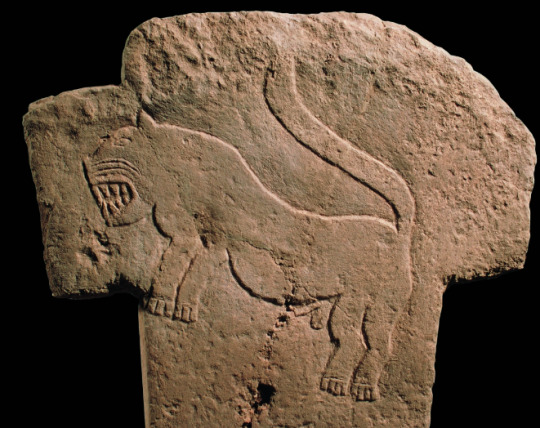
Kinda looks like a big cat?
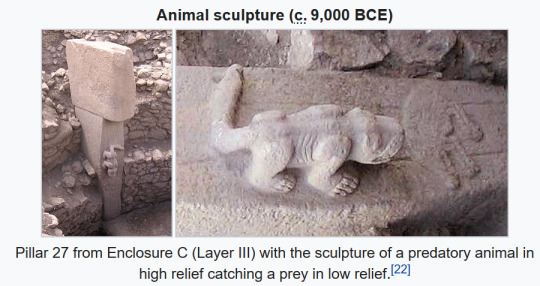
Cheetahs were apparently still living in the eastern Mediterranean, in the Sinai of Palestine, until at least 1945. They were still present in Mesopotamia until at least 1925, when the cats were reported south of Baghdad. They may have gone extinct within Turkish political borders in the 1800s, but this would’ve been difficult to confirm because of eastern Turkey’s mountainous terrain. (Cheetahs also survived in Afghanistan, Yemen, Oman into the 1970s.) Cheetahs in Anatolia ostensibly would’ve been the Asiatic subspecies, Acinonyx jubatus venaticus, which is the same subspecies currently living in Iran.
Tigers still lived in Kurdish lands and within Turkey’s borders into the 1970s. The Caspian tiger (Panthera tigris virgata). Tigers were living in Georgia, Azerbaijan, and Armenia until the 1940s, apparently. They were also reported living near Crimea, Sochi, and the shores of the Black Sea during the 1700s. This subspecies, the Caspian tiger, seemed to utilize the wooded vegetation of the riparian corridors along the Amu Darya and Syr Darya rivers, which provided suitable habitat and cover for the tigers to disperse across the great deserts of Central Asia between Lake Balkash and the Caspian. Relative to those deserts, the slopes of the Caucasus and the lush forests of Iranian shores of the Caspian (not too different from temperate rainforest) are much more vegetated. (There were 9 tiger subspecies living during recent centuries. Five are alive in the wild: Malayan, Bengal, Sumatran, Indochinese, and Siberian. One might be extinct in the wild: South China. Three are extinct: Bali, Javan, and Caspian.)
Leopards apparently still survive within Turkey’s borders, in Kurdistan. The subspecies is Panthera pardus saxicolor, the leopard of Anatolia, the Caucasus, and Persia. The same subspecies still lives nearby in Georgia, Armenia, Azerbaijan, northern Iraq, and Persia.
Another leopard subspecies, Panthera pardus nimur, still lives in the Arabian peninsula and was historically present in Palestine, the Sinai, and the eastern Mediterranean shore close to Anatolia.
Lions apparently went extinct within Turkish borders in the late 1800s, but they were still recorded in nearby Mesopotamia until the First World War, when a lion was famously killed in Iraq in 1918. Lions were present in Persia until at least 1944, when a dead lion was found in Iranian Khuzestan. Lions were also present in Thessalonika and the Greek shores of the Aegean until at least 300 AD. (According to records from that time, an also according to archaeological dating of lion remains.) It’s likely that lions lived in Iberia (and Italy?) until 1500 BC or so. (Then again, maybe not surprising, since the cat is adaptable enough that lions also lived alongside humans in North America only a few thousand years ago, too. The lions in North America were even, possibly, the same species as the modern extant lion, Panthera leo atrox. But sometimes the American lion is designated as its own species, Panthera atrox.)
Persian cheetah:

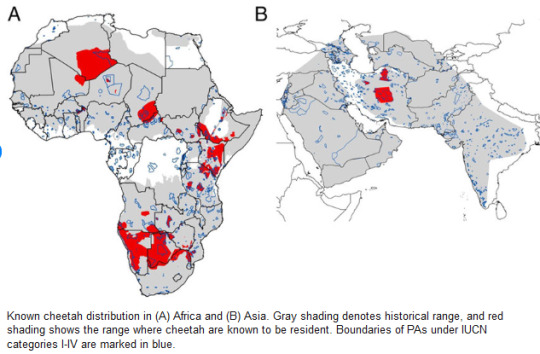

Caspian tiger:
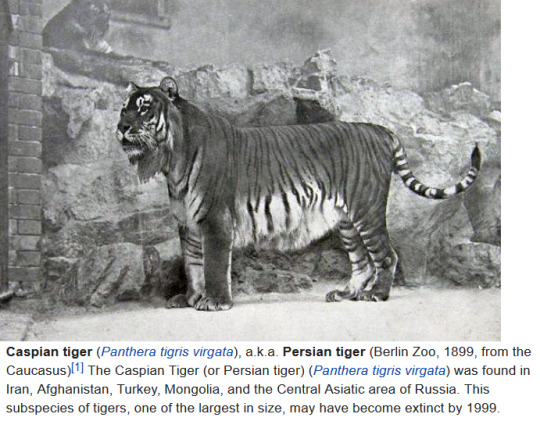
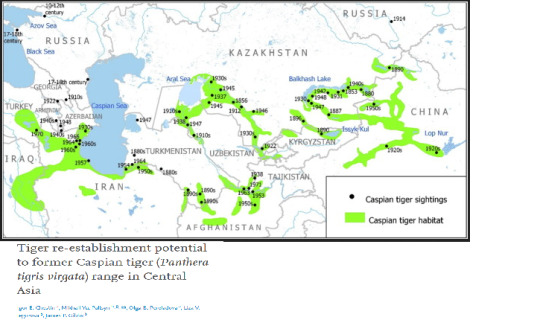
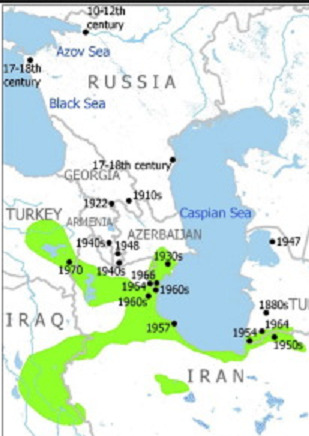

Persian and Arabian leopard:
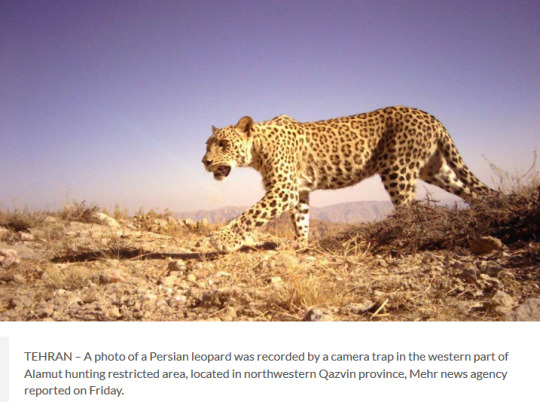
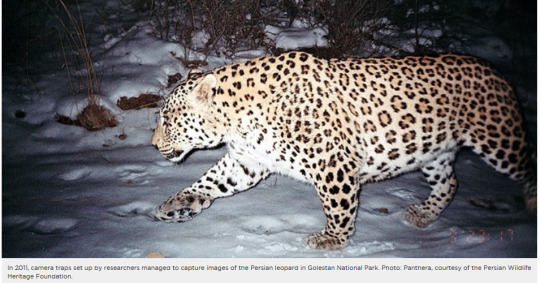
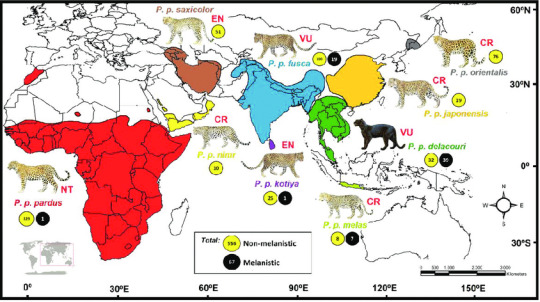

Distribution of Persian leopard subspecies:
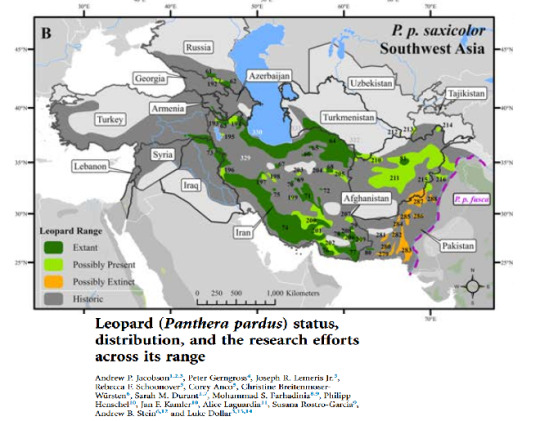
Distribution of Arabian leopard subspecies:

Asiatic lion:


“Modern” lion (Panthera leo) during recent millennia in Holocene:
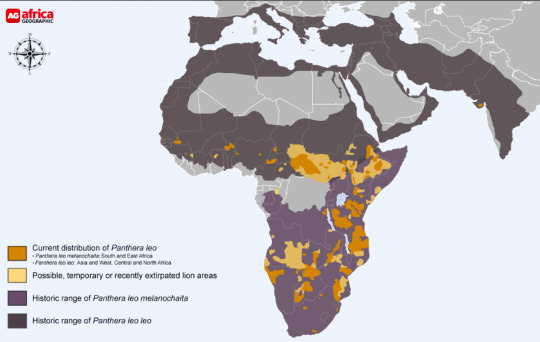
Lion during Pleistocene:

Even caracals mingled with the other cats in Anatolia:
The ancient Near East was a meeting place, and very biodiverse.
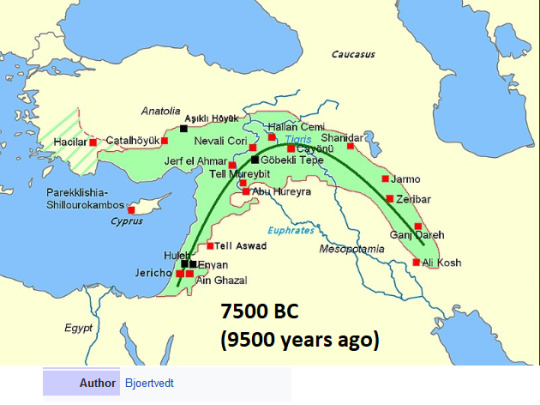

The “Fertile Crescent” really was fertile. Even Asian elephants (Elephas maximus) appear to have been present in Mesopotamia and near Kurdistan in ancient times during the ascent of Assyria.
(Isn’t it thought-provoking how woolly mammoths still survived on Wrangell Island 9000 years after the first construction at Gobekli Tepe; mammoths still alive 1000 years after the construction of the great pyramids of Egypt?)
Something I like to think about: Because of the habitat association of lions, how they’re always photographed against a landscape of intermittent woodland and grassland, I think it might be a little easier to picture lions living in Greece, Anatolia, and the Mediterranean shores of Europe in recent millennia because of the mild climate and how the chaparral ecology is not too unlike savanna or scrub. But to imagine lions and tigers and leopards living in the steppes of Ukraine, the snowy northern slopes of the Caucasus, and the shores of the Black Sea in recent centuries? Cool.
#ecology#landscape#indigenous#multispecies#temporal#distribution maps#tiger#cheetah#lion#extinction#elephant#geographic imaginaries#tidalectics#ecologies
477 notes
·
View notes
Text

A beautiful 😍 young African Leopard avoiding a pride of Lions.
📷 Photo by @jimmystlee
The 8 Leopard subspecies conservation status are listed below.
It shows the real threat Leopards & big cats on a broader sense & why they need our support.
Critically Endangered,
Amur Leopard.
Javan Leopard.
Arabian Leopard.
Endangered,
North Chinese Leopard.
Sri Lankan Leopard.
Vulnerable,
Indochinese Leopard.
Near Threatened,
African Leopard.
Indian Leopard.
🐆 Follow Us 🐯 @bigcatswildlife
#leopard #leopards #bigcats #bigcatswildlife #india #china #russia #africa #asia #srilanka #java #indochinese #iran #afghanistan #egypt #uae #wildcats #wildlife #wildlifeig #africanwildlife #indianwildlife #asianwildlife #wildlifephotography #wildlifeofinstagram #animalphotography #wildlifephotos #animalpics #animalphotos #wildlifepics #wildlife_vision
4 notes
·
View notes
Text
𝚝𝚑𝚎 𝚎𝚗𝚟𝚒𝚛𝚘𝚗𝚖𝚎𝚗𝚝 / 𝚎𝚏𝚏𝚎𝚌𝚝𝚜 𝚘𝚏 𝚙𝚘𝚊𝚌𝚑𝚒𝚗𝚐

Why hello there, my name is Carissa, long for Cari, and short for nothing. I have started blogs in the past, none have ever reached their maximum potential, mainly because I'm overall sluggish and forget to write my opinions and feelings down on a virtual space for all to see. I have wanted ONE stable place to write, I mean... I have in the past, including my journal that is filled to the brim with my once in a blue moon mental breakdowns (lol jk), but in all seriousness, I love writing. I perhaps may not be the best writer, but I do know I write better than I do speaking vocally. So here is my first written post on moonsoakedgirl.tumblr.com (inspired by 'Artemis Girl' by Nikita Gill), where I will share my thoughts on numerous amount of topics, environmental issues, astrology, poetry, photography, and pretty much anything else my little heart desires.
So that was a minor introduction, you're welcome. NOW we will be getting into the real topic of this post which is wildlife, both on land and sea, and the effects of poaching. This so much isn't a random topic but as my mental chatter was driving me to an insane brink at 3:14 am about how much I love animals. It all started with the first thought that it is such a turn off when guys/girls go hunting, whether it be deer, bears, fish, whatever. I find it revolting that a human could feel any other emotion besides sadness when looking at a dead animal, nevertheless CAUSING the death of that animal. Then it got me thinking. Why do humans think that everything that was put on this earth is for their amusement, satisfaction, entertainment? Animals are not humanmade. Why do we believe that we have the natural born right to own them, so much so we can decide what to do with their lives? Now I know you're thinking of dogs, cats, and any other domestic related pet but this isn't about them. Did you know that "Leatherback Sea Turtles, Currently, all seven species of marine turtles are in danger of becoming extinct, Tigers, Javan Rhinoceros, Amur Leopards and Northern Sportive Lemurs" are all going extinct rather rapidly due to poaching. Some of the most well-known animals... all going extinct. Not to mention marine life that is also highly becoming endangered such as the blue whale, sea lions, hammerhead shark, fin whale, Hector's dolphin, and so many more. Now the reason for the high threat of these animals is mainly due to the need for their skin or for meal purposes. Which in hindsight, is ridiculous because what the hell do you need a tiger skin for? How will it remotely benefit you in the long run, it most certainly won't help you escape from death so why the hell are you doing it. These are living beings. They breathe, they hunt to survive, they procreate, they are just trying to live their lives... literally.
Okay, I think I am done with my rant, for now, I might go on another tangent tomorrow or soon. I would like to recommend some documentaries below if you are more interested in learning about wildlife endangerment!!! Also, I will link below websites in which you can donate to help protect them :)
Documentaries: BlackFish The Blue Planet The Ivory Game Planet Earth Mission Blue
Links to Donate: https://defenders.org/ http://wwf.panda.org/ https://www.sierraclub.org/home https://earthjustice.org/action
#wildlife#protest#fight#endangered#firstpostever#imgettingcreativenow#donate#money#please#idonatetoo#dontworry#documentaries#so#sick#likei#love#them#wow#im#having#a#conversation#in#my#tags#lol#okay#bye
3 notes
·
View notes
Text

My Legion 5 Sad Cat Club
-Sumatran-wide tiger survey
-West Sumatra tiger occupancy
-GPS collar sumatran tiger monitoring
-Sumatran tiger release programs
-Javan Leopard Network
-Muria leopard occupancy
-Muria landscape fragmentation and land cover change prediction
-Mount Sawal expedition
-Sanggabuana conservation foundation
-Cikepuh camera trap survey
-Thesis data collection
Been accross 10 different province within a month, we are on fire 🔥🔥🔥🔥🔥🔥
0 notes
Text
ok I just saw this and I love leopards so I’m legally required to info dump about leopards. DISCLAIMER: mostly I’m talking about African leopards as I’m not very familiar with the other subspecies but they are all fairly similar just the comparisons will be different.
Okay here we go:
- leopards claws are specialised in a way that allows them to climb trees facing both forwards and backwards
- leopards are one of the strongest mammals for their size and are capable of carrying around 3-4 times their own body weight vertically up trees
- leopards carry and hang their prey in trees in order to protect it from lions and hyenas
- like all big cats (and most African wildlife) a leopards coat is designed to help it blend in with its environment
- they need this camouflage as leopards hunt in a very similar way to, say, cheetahs. They will stalk their prey and get close enough to them that they won’t have to waste energy running them down
- how they differ to cheetahs is that, unlike a cheetah who will run the last distance to their prey, a leopard will often jump it - from a crouched start they can leap 6 meters (20ft) horizontally and 3 meters (10ft) vertically
- while a leopard will often flee from a large pack of hyenas or a pride of lions they are in fact one of the most capable of the big (African) cats in terms of fighting. A lion will usually only use its front claws and teeth to fight, a cheetah is just all around terrible at fighting a target that isn’t running away, whereas a leopard is know to fight with all four claws plus teeth at the same time - and due to rotting animal flesh on their teeth and claws leopard wounds will often become infected quickly and fatally.
- a leopards favourite type of meat baboon but they are opportunists and will go for just about anything, including fish
- There are currently 9 subspecies of leopards recognised by the AWF, these are: African, Indian, Javan, Amur, Arabian, North Chinese, Indochinese, Persian/Caucasian, and Sri Lankan
- Leopards coats differ from leopard to leopard, similar to wild dogs
- Leopards, unlike the other African big cats, basically cannot be made to be your friend :(. this is because of their solitary and opportunistic life and their brain is hardwired to see anything that isn’t a leopard as potential food. Leopard cubs do not have this tendency though so they can seem all sweet but one day they will turn against you
- they are extremely solitary animals, the most solitary of the African big cats, and have very wide hunting ranges that they, well, hunt in. These ranges are often marked by claw marks or urine
- male leopards are significantly bigger than female and have far bigger ranges that often meet with several female ranges
- leopard cubs first eat meet at about 6-7 weeks old but don’t stop suckling until about 2-3 months, they will stay with the mother for about 2 years. The father does not help the mother raise the children
- leopard hunt during the night hours in order to catch their prey off guard and aid their camouflage as baboons have very good eyesight (which is similar to humans in that they can see colour, but equivalent to a 8x zoom magnifier if a pair of binoculars). However, leopards can also be seen active during the day
- a leopards can make purring and meowing sounds like a house cat but their main call is often compared to that of a saw cutting through wood
- leopards often reach speeds of up to 56km/h (35mph) but when hungry can reach 64km/h (40mph) - slow compared to other big cats.
- leopards like most felines have retractable claws to help them move more quietly. Notably cheetahs do not have these because they are way too specialised for running really fast
- leopards are cool
- they are my favourite animal
- cheetahs are way too specialised for their own good
#like really cheetah’s are like that person who’s only personality is that they can run really fast#like they just kinda crumple if they gotta do anything else#no hate to cheetah fans but also yes#leopards are just cooler than them#like cheetahs are just house cats but not as good#but their vocals are pretty cool tbf#they can do those bird whistles and purrs and woofs and things it’s really cool I promise#leopard#leopards#african wildlife#big cats#nature#animals#long post
0 notes
Text
the signs as animals
arist: south african cheetah
aries: american black bear
argo: kordofan giraffe
arga: griffon vulture
arittanius: wildebeest
arittarius: yak
arpio: bowhead whale
arpia: african elephant
arlo: horse
aro: barn owl
ara: tiger
arza: white rhinoceros
aricorn: spider monkey
ariborn: ring-tailed lemur
arnius: tabby cat
arius: megabat
asci: rock dove
asces: pied crow
armino: lion
armini: eurasian wolf
arcer: gerbil
arcen: newt
arus: bush-tailed porcupine
arun: philippine forest rat
taurrist: asiatic cheetah
taurries: asian black bear
taurgo: nubian giraffe
taurga: cinereous vulture
taurittanius: roan
taurittarius: southern marsupial mole
taurpio: right whale
taurpia: asian elephant
taurlo: sea eagle
tauro: grass owl
taurra: sheep
taurza: sumatran rhinoceros
tauricorn: vervet monkey
tauriborn: aye-aye
taurnius: jungle cat
taurrius: flying fox
taursci: trocaz pigeon
taursces: american crow
taurmino: kit fox
taurmini: tundra wolf
taurcer: guinea pig
taurcen: seal
taurus: crested porcupine
taurun: nile rat
gemrist: north american cougar
gemries: atlas bear
gemgo: west african giraffe
gemga: white-rumped vulture
gemittanius: waterbuck
gemittarius: northern marsupial mole
gempio: blue whale
gempia: blue-ringed octopus
gemlo: snake-eagle
gemo: sooty owl
gemra: argali
gemza: black rhinoceros
gemicorn: proboscis monkey
gemiborn: sifaka
gemnius: european wildcat
gemrius: egyptian fruit bat
gemsci: laurel pigeon
gemsces: cape crow
gemmino: red fox
gemini: arabian wolf
gemcer: dove
gemcen: house mouse
gemus: long-tailed porcupine
gemun: moluccan prehensile-tailed rat
canrist: florida panther
canries: blue bear
cango: reticulated giraffe
canga: black vulture
canittanius: eland
canittarius: golden mole
canpio: bryde’s whale
canpia: dumbo octopus
canlo: black-chested buzzard-eagle
cano: itombwe owl
canra: mouflon
canza: indian rhinoceros
canicorn: pygmy marmoset
caniborn: mouse lemur
canius: black-footed cat
canrius: california leaf-nosed bat
cansci: hill pigeon
cansces: hooded crow
canmino: cape fox
canmini: steppe wolf
cancer: humming bird
cancen: mayor’s moue
canus: bristle-spined rat
canun: bulldog rat
lerist: african leopard
leries: eurasian brown bear
lego: angolan giraffe
lega: turkey vulture
leittanius: gerenuk
leittarius: eurasian beaver
lepio: fin whale
lepia: mimic octopus
lelo: black solitary eagle
leo: bay owl
lera: urial
leza: nile hippopotamus
leicorn: rhesus macaque
leiborn: cockatiel
lenius: sand cat
lerius: hondurian white bat
lesci: snow pigeon
lesces: somali crow
lemino: arctic fox
lemini: mongolian wolf
lecer: flying squirrel
lecen: sikkim mouse
leus: prehensile-tailed porcupine
leun: kerala rat
virrist: javan leopard
virries: eurasian brown bear
virgo: south african giraffe
virga: california condor
virittanius: steenbok
virittarius: north american beaver
virpio: see whale
virpia: blanket octopus
virlo: crested eagle
viro: scops owl
virra: bighorn sheep
virza: east african hippopotamus
viricorn: gibbon
viriborn: parrotlet
virnius: chinese mountain cat
virrius: big brown cat
virsci: specled pigeon
virsces: flores crow
virmino: fennec fox
virmini: dingo
vircer: unstriped ground squirrel
vircen: volcano mouse
virus: electric eel
virun: himilayan field rat
librist: northern goshawk
libries: grizzly bear
libgo: masai giraffe
libga: greater flamingo
libittanius: nyala
libittarius: star-nosed mole
lipio: chilean dolphin
lipia: coconut octopus
liblo: harpy eagle
libo: screech owl
libra: thinhorn sheep
libza: cape hippopotamus
libicorn: bornean orangutan
libiborn: caique
libnius: amazon weasel
librius: dwarf epaulettes fruit bat
libsci: wood pigeon
libsces: bismark crow
limino: grey fox
limini: dog
libcer: indian palm squirrel
libcen: indian field mouse
libus: hog-nosed skunk
libun: sunburned rat
scorrist: gray-bellied hawk
scorries: east siberian brown bear
scorgo: thornicroft’s giraffe
scorga: lesser flamingo
scorittanius: klipspringer
scorittarius: hairy-tailed mole
scorpio: arabian dolphin
scorpia: giant squid
scorlo: papuan eagle
scoro: snowy owl
scorra: snow sheep
scorza: west african hippopotamus
scoricorn: sumatran orangutan
scoriborn: lorikeet
scornius: mountain weasel
scorrius: split-nosed bat
scorsci: comoros olive pigeon
scorsces: white-necked crow
scormino: swift fox
scormini: tibetan wolf
scorcer: eastern grey squirrel
scorcen: ryukyu mouse
scorus: hooded skunk
scorun: aceh rat
sagirist: red-chested goshawk
sagiries: syrian brown bear
sagigo: pig
sagiga: chilean flamingo
sagiittanius: kudu
sagiittarius: eastern mole
sagipio: long-beaked dolphin
sagipia: colossal squid
sagilo: balck eagle
sagio: great horned owl
sagira: red kangaroo
sagiza: angola hippopotamus
sagiicorn: tapanuli orangutan
sagiiborn: parakeet
saginius: steppe polecat
sagirius: brown long-eared bat
sagisci: white-naped pigeon
sagisces: jungle crow
sagimino: plains bison
sagimini: japanese wolf
sagicer: colorado chipmunk
sagicen: cook’s mouse
sagius: striped skunk
sagiun: snake
capririst: besra
capriries: giant panda
caprigo: chicken
capriga: jame’s flamingo
capriittanius: lechwe
capriittarius: gansu mole
capripio: killer whale
capripia: humboldt squid
caprilo: spotted eagle
caprio: eagle owl
caprira: eastern grey kangaroo
capriza: north american ostrich
capriicorn: eastern gorilla
capriiborn: pianos parrot
caprinius: long-tailed weasel
capririus: mediterranean horseshoe bat
caprisci: stork
caprisces: fish crow
caprimino: wood bison
caprimini: indian wolf
capricer: grey-collard chipmun
capricen: cypriot mouse
caprius: spotted skunk
capriun: spider
aquarist: long-tailed hawk
aquaries: sloth bear
aquago: red junglefowl
aquaga: andean flamingo
aquittanius: springbok
aquittarius: long-tailed mole
aquapio: pilot whale
aquapia: japanese flying squid
aqualo: tawny eagle
aquo: fish owl
aquara: western grey kangaroo
aquaza: masai ostrich
aquicorn: western gorilla
aquiborn: cockatoo
aquanius: yellow-bellied weasel
aquarius: raccoon
aquasci: goose
aquasces: house crow
aquamino: european bison
aquamini: arctic wolf
aquacer: gray-footed chipmunk
aquacen: steppe mouse
aqus: fattail scorpion
aqun: alligator
pirist: chanting goshawk
piries: polar bear
pigo: cow
piga: american flamingo
piittanius: sable antelope
piittarius: japanese shrew mole
pipio: houglass dolphin
pipia: vampire squid
pilo: camel
pio: spotted wood owl
pira: antilopine kangaroo
piza: arabian ostrich
piicorn: chimpanzee
piiborn: conure
pinius: european mink
pirius: koalas
pisci: duck
pisces: palm crow
pimino: water buffalo
pimini: baffin island wolf
picer: uinta chipmunk
picen: meerkat
pius: pandinus
piun: crocodile
#homestuck#zodiac#extended zodiac#the signs as#long post#originality is overrated#i spent way way way way too long on this thing
671 notes
·
View notes
Text

The leopard (Panthera pardus) is one of the five extant species in the genus Panthera, a member of the cat family, Felidae. It occurs in a wide range in sub-Saharan Africa, in some parts of Western and Central Asia, Southern Russia, and on the Indian subcontinent to Southeast and East Asia. It is listed as Vulnerable on the IUCN Red List because leopard populations are threatened by habitat loss and fragmentation, and are declining in large parts of the global range

Compared to other wild cats, the leopard has relatively short legs and a long body with a large skull. Its fur is marked with rosettes. It is similar in appearance to the jaguar (Panthera onca), but has a smaller, lighter physique, and its rosettes are generally smaller, more densely packed and without central spots. Both leopards and jaguars that are melanistic are known as black panthers. The #leopard is distinguished by its well-camouflaged fur, opportunistic hunting behaviour, broad diet, strength, and its ability to adapt to a variety of habitats ranging from rainforest to steppe, including arid and montane areas. It can run at speeds of up to 58 km/h (36 mph)

In 2017, The Cat Classification Task Force of the Cat Specialist Group recognized the following eight subspecies as valid taxa:
🐆 African leopard (P. p. pardus) (Linnaeus, 1758)
- It is the most widespread leopard subspecies and is native to most of Sub-Saharan Africa.
🐆 Indian leopard (P. p. fusca) (Meyer, 1794)
- It is native to the Indian subcontinent, Myanmar and southern Tibet.
🐆 Javan leopard (P. p. melas) (Cuvier, 1809)
- It is native to Java in Indonesia and is considered Critically Endangered.
🐆 Arabian leopard (P. p. nimr) (Hemprich and Ehrenberg, 1830)
🐆 P. p. tulliana (Valenciennes, 1856)
🐆 Amur leopard (P. p. orientalis) (Schlegel, 1857)
🐆 Indochinese leopard (P. p. delacouri) Pocock, 1930
🐆 Sri Lankan leopard (P. p. kotiya) Deraniyagala, 1956

To learn more please contact us and book your vacation of a lifetime. √ See more 👉 www.kim.tours 🌍 via @kimzebraadventuressafaris #kimzebraadventuressafaris
1 note
·
View note
Text
The Magnificent Seven Endangered Wild Cats
The Magnificent Seven Endangered Wild Cats
SOUTH ARABIAN LEOPARD-MOTHER AND CUB West African lion(Panthera leo senegalensis) – Critically Endangered South China tiger(Panthera tigris ssp. Amoyensis) – Critically Endangered – Possibly Extinct in the Wild Sumatran tiger(Panthera tigris ssp. sumatrae) – Critically Endangered Amur leopard(Panthera pardus ssp. orientalis) – Critically Endangered Javan leopard(Panthera pardus ssp. melas) –…

View On WordPress
0 notes